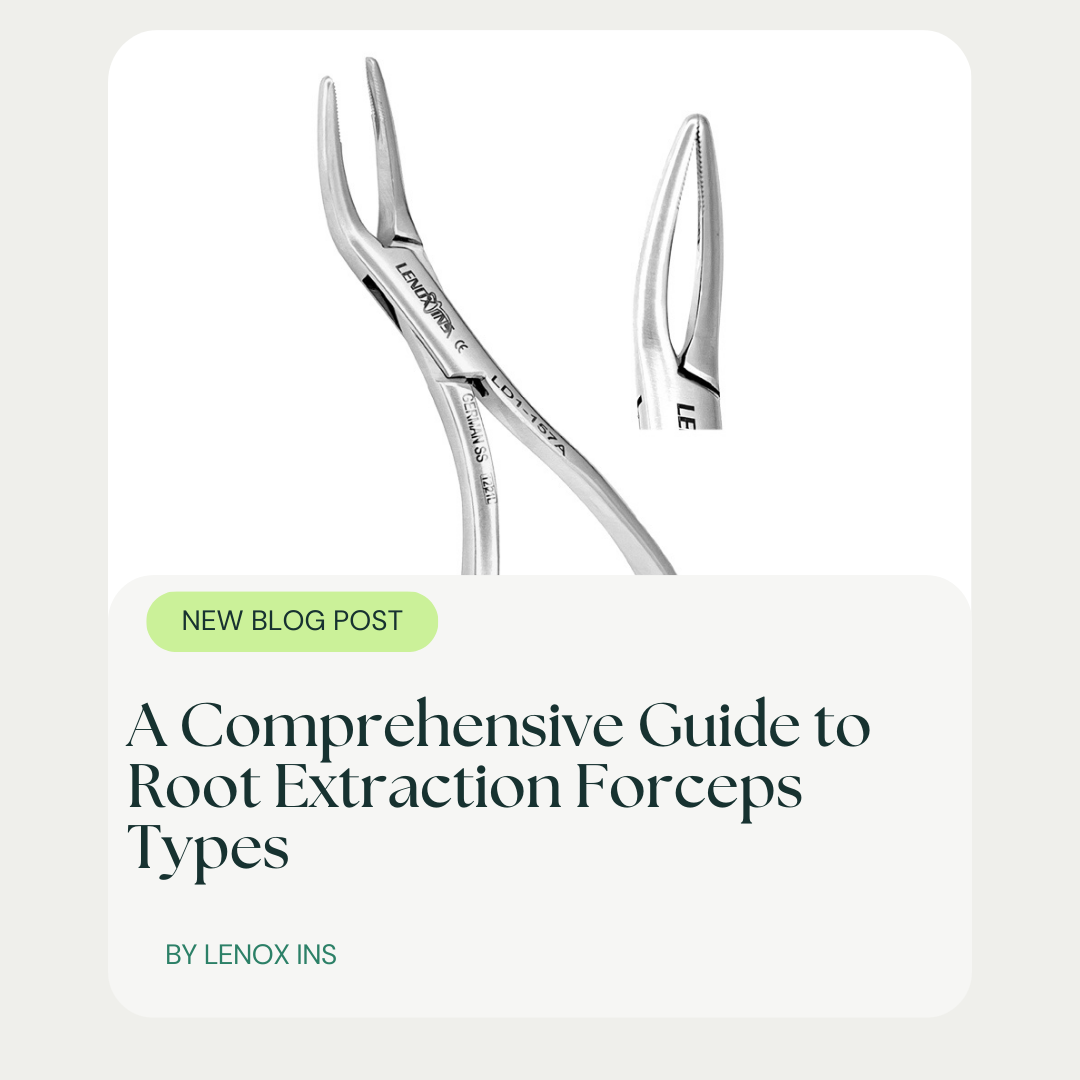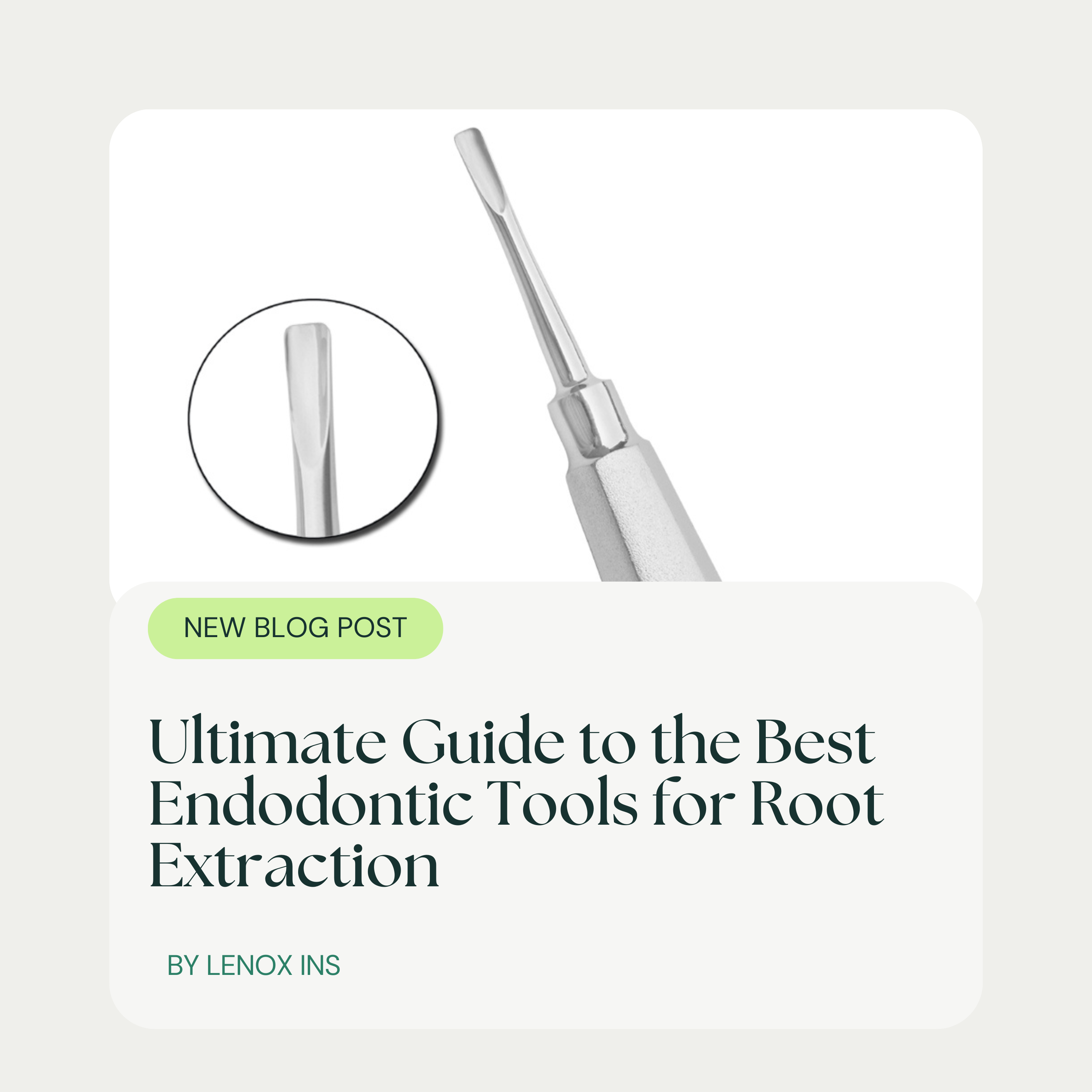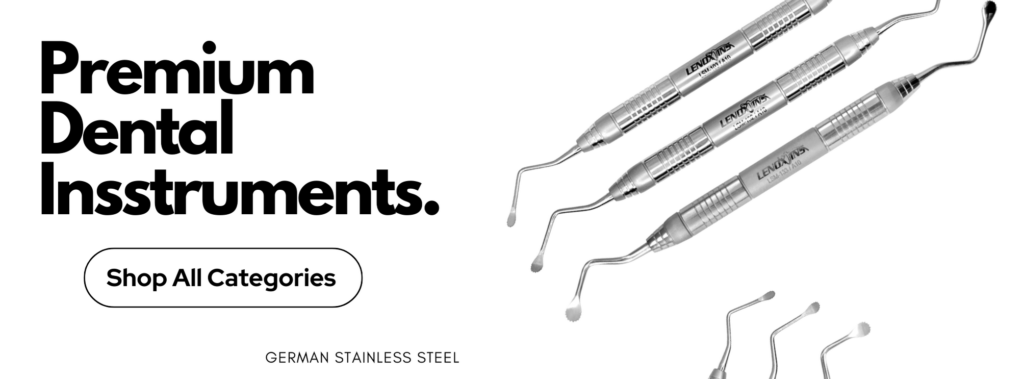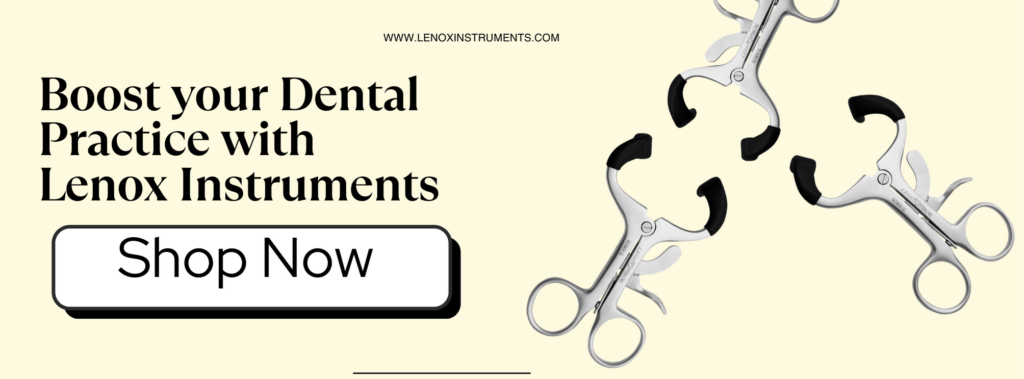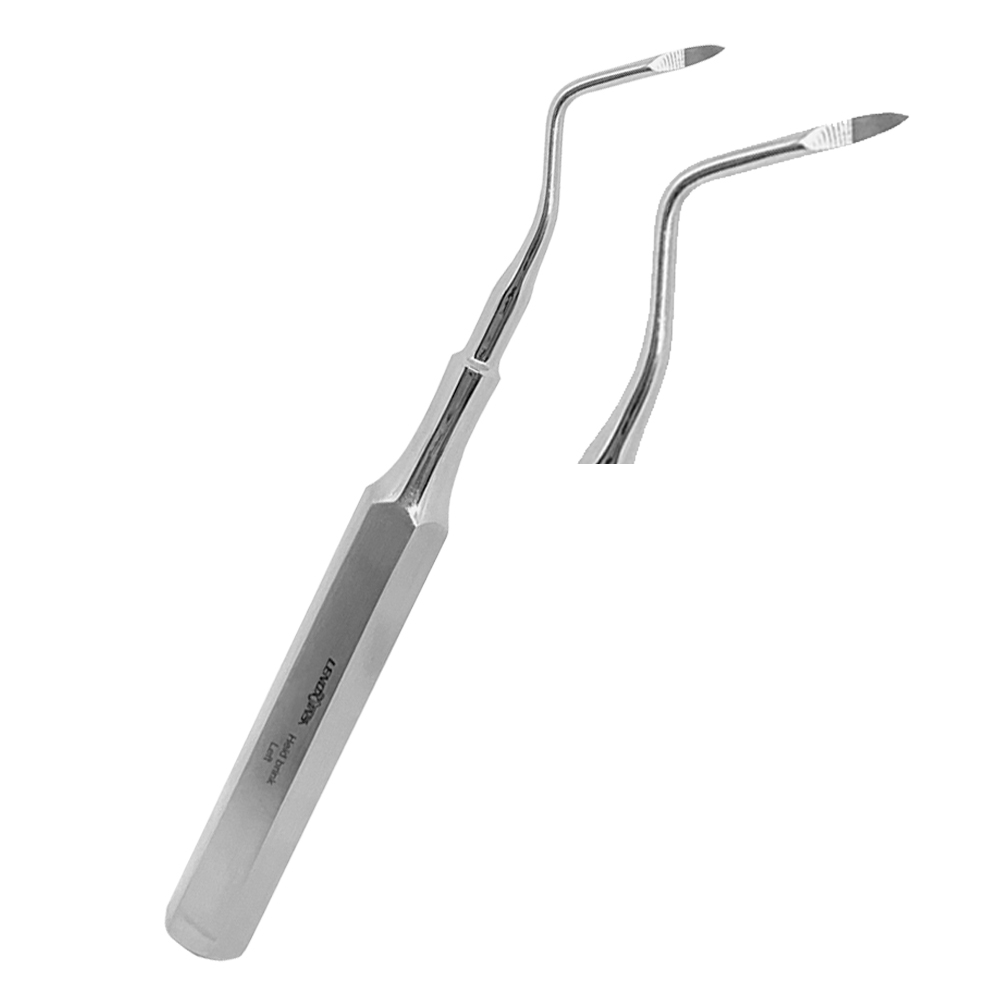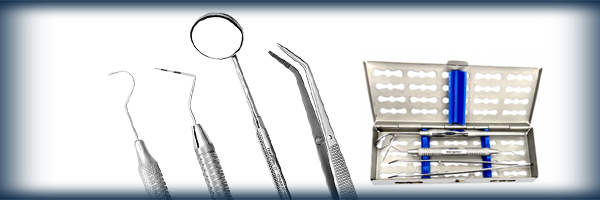Ultimate Guide to Universal Extraction Forceps: Key Features
- Posted October 17, 2024
- by lenoxinstro
Table Of Contents:
- Key Takeaways
- Understanding Universal Extraction Forceps in Dental Practice
- Design and Construction Features
- Types of Universal Extraction Forceps
- Key Functional Attributes
- Proper Usage Techniques
- Maintenance and Sterilization
- Advantages Over Specialized Forceps
- Innovations and Future Developments
- Frequently Asked Questions
- Conclusion
Universal extraction forceps are essential tools in dental practice, but many dental professionals struggle to choose the right ones. This comprehensive overview will explore the key features of universal extraction forceps, including their design, types, and functional attributes. By understanding these aspects, dental clinics can make informed decisions when selecting forceps for tooth extraction procedures. We’ll also cover proper usage techniques, maintenance, and sterilization, ensuring optimal performance and longevity of these stainless steel instruments. Whether you’re dealing with molars or other teeth, this guide will help you navigate the world of universal extraction forceps, from their beaks to their handles.
Key Takeaways
- Universal extraction forceps are versatile dental tools designed for efficient tooth removal across various scenarios
- Proper usage techniques and maintenance are crucial for successful extractions and instrument longevity
- These forceps offer cost-effectiveness and ease of use compared to specialized alternatives
- Recent innovations focus on advanced materials, ergonomic design, and integration with modern dental equipment
- Regular inspection and sterilization are essential for maintaining forceps functionality and ensuring patient safety
Understanding Universal Extraction Forceps in Dental Practice

Universal extraction Forceps: Dental & Surgical are essential dental instruments used in tooth extraction procedures. These steel surgical tools have evolved significantly since their inception, adapting to modern dental techniques. Today, they play a crucial role in dental extractions, offering versatility and precision. Understanding their features and applications is vital for dental clinics seeking efficient and effective tooth removal solutions.
Definition and Purpose of Universal Extraction Forceps
Universal extraction forceps are specialized dental instruments designed for the efficient removal of teeth from the mouth. These versatile tools feature curved beaks that adapt to various tooth shapes, including premolars, and allow dentists to grasp and extract teeth with precision. Often used in conjunction with other instruments such as elevators and retractors, universal extraction forceps provide dental professionals with the necessary leverage and control to perform extractions effectively, minimizing trauma to surrounding tissues and ensuring patient comfort during the procedure.
Historical Development and Evolution in Dentistry
The evolution of universal extraction forceps in dentistry has been marked by significant advancements in design and functionality. From rudimentary tools to sophisticated instruments, these forceps have incorporated features that enhance grip, leverage, and precision. The development of specialized beaks for different tooth types has improved extraction efficiency, while ergonomic handles have reduced operator fatigue. This progress has coincided with advancements in other dental tools, such as adhesives for restorations, scissors for soft tissue management, hemostats for bleeding control, syringes for anesthesia delivery, and instruments for endodontics. The historical timeline of extraction forceps reflects the broader evolution of dental practice:
- Ancient times: Basic plier-like tools
- Middle Ages: Introduction of specialized dental extractors
- 19th century: Development of forceps with curved beaks
- 20th century: Refinement of forceps design for specific tooth types
- Modern era: Integration of ergonomic features and advanced materials
Role in Modern Dental Procedures
Universal extraction forceps play a critical role in modern dental procedures, particularly in tooth extraction. These versatile instruments enable dentists to efficiently remove teeth, including incisors, while minimizing damage to surrounding gums. Their design allows for precise grip and control, reducing the risk of fracture during extraction. Modern forceps are typically made of high-quality, autoclavable materials, ensuring proper sterilization and longevity. Many manufacturers offer warranties on these instruments, recognizing their importance in dental practice.
The forceps lay on the tray, their design a testament to years of dental innovation. A closer look reveals the intricate features that make these tools indispensable in every dentist’s hands.
Design and Construction Features

Universal extraction forceps exhibit key design features that enhance their functionality in dental procedures. These include durable materials for longevity, ergonomic handles for improved grip, and specialized beak configurations for efficient tooth removal. Each element contributes to the forceps‘ effectiveness in extracting teeth from the maxilla and other areas, while minimizing patient discomfort and tissue damage.
Material Composition and Durability
Universal extraction forceps are typically constructed from high-grade stainless steel, ensuring durability and resistance to corrosion. This robust material composition allows the forceps to withstand repeated use and sterilization processes, making them suitable for placement on dental trays alongside other instruments like scalpels and amalgam carriers. The forceps‘ design incorporates ergonomic handles for optimal hand control, enabling dentists to apply precise force when extracting teeth from the mandible or maxilla. Manufacturers often subject these instruments to rigorous quality testing to guarantee their longevity and performance in dental practices. Universal atraumatic extraction forceps elevators set
Ergonomic Handle Design for Enhanced Grip
The ergonomic handle design of universal extraction forceps enhances grip and control during dental procedures. Manufacturers utilize advanced manufacturing techniques to create handles that fit comfortably in the hand, reducing fatigue during prolonged use. These handles often incorporate textured surfaces or non-slip materials, similar to those used on dental drills, to ensure a secure grip even when exposed to disinfectants or moisture. Some high-end models feature handles made from lightweight yet durable materials like tungsten carbide or specialized metal alloys, further improving maneuverability and reducing hand strain.
Beak Configuration and Its Importance
The beak configuration of universal extraction Dental forceps is crucial for their effectiveness in tooth removal. The beaks, designed with precision, grip teeth securely without causing damage to surrounding tissues. Manufacturers often incorporate features similar to those found in piers or Forceps: Dental & Surgical, allowing for optimal adaptation to various tooth shapes. Some advanced models even include specialized coatings or materials that enhance grip, similar to the way cement adheres to surfaces. The beak design also considers the force distribution during extraction, much like how a mallet distributes impact, ensuring efficient tooth removal while minimizing the risk of fracture.
The forceps gleamed under the surgical lights. Each type had its purpose, waiting to be chosen.
Types of Universal Extraction Forceps

Universal dental extraction forceps come in various types, each designed for specific purposes in dental procedures. Upper universal forceps are tailored for maxillary extractions, while lower universal forceps are optimized for mandibular teeth. Pediatric variants cater to children’s dentition. These tools are crucial in managing pressure during extractions and are used alongside anesthesia to prevent infection. Some specialized forceps: Dental & Surgical may also assist in sinus lift procedures or complement osteotome techniques.
Upper Universal Forceps: Characteristics and Uses
Upper universal forceps are designed for extracting teeth from the maxillary arch. These forceps feature beaks angled at approximately 45 degrees to accommodate the curvature of the upper jaw. The handles are often made of tungsten carbide for durability and grip. Dentists use these forceps in conjunction with other instruments like curettes and tweezers for comprehensive tooth extraction procedures. The description of upper universal forceps typically includes specifications on beak design, handle material, and overall length:
| Feature | Description |
|---|---|
| Beak Angle | 45 degrees |
| Handle Material | Tungsten Carbide |
| Common Uses | Maxillary tooth extraction |
| Complementary Tools | Curettes, Tweezers |
Lower Universal Forceps: Features and Applications
Lower universal forceps are designed specifically for extracting teeth from the mandibular arch. These instruments feature straight or slightly curved beaks to accommodate the mandible‘s anatomy, allowing for optimal grip and torque application. Dental professionals often use lower universal forceps in conjunction with a spatula or speculum to improve visibility and access during extractions. Some models incorporate titanium components for enhanced durability and reduced weight, while others feature specialized screw mechanisms for fine-tuned pressure control.
Pediatric Variants and Their Specializations
Pediatric variants of universal extraction forceps are designed specifically for use in children’s dentistry. These specialized dental instruments feature smaller, more delicate beaks and handles to accommodate the smaller teeth and oral structures of young patients. Pediatric forceps often incorporate bright colors or child-friendly designs to reduce anxiety during dental procedures. Dental professionals select these tools based on the child’s age, tooth development stage, and specific extraction requirements, ensuring gentle and efficient tooth removal while minimizing trauma to surrounding tissues.
The forceps come in many shapes, each designed for a specific task. But their real power lies in how they function, gripping and extracting with precision.
Key Functional Attributes

Universal extraction forceps possess key functional attributes that enhance their effectiveness in dental procedures. These include adaptability to various tooth morphologies, precision in grasping and removing teeth, and balanced weight distribution for optimal control. These features enable dental professionals to perform extractions efficiently while minimizing patient discomfort and tissue damage.
Adaptability to Various Tooth Morphologies
Universal extraction forceps exhibit remarkable adaptability to various tooth morphologies, allowing dental professionals to efficiently extract a wide range of tooth types. The beaks of these forceps feature carefully designed contours that conform to different tooth shapes, including molars, premolars, and incisors. This versatility eliminates the need for multiple specialized instruments, streamlining the extraction process and reducing equipment costs for dental clinics. Extracting forceps fig 88r upper molar right black gold
Precision in Tooth Grasping and Removal
Universal extraction forceps excel in precision tooth grasping and removal. Their carefully designed beaks provide a secure grip on teeth without causing damage to surrounding tissues. This precision allows dentists to apply controlled force during extractions, reducing the risk of complications such as root fractures or alveolar bone damage. The forceps‘ ergonomic design enables fine adjustments during the procedure, ensuring efficient tooth removal while minimizing patient discomfort.
Balance and Weight Distribution for Control
Universal extraction forceps are designed with careful attention to balance and weight distribution, enhancing control during dental procedures. The instruments’ weight is evenly distributed across the handle and beaks, allowing dentists to maintain precise control throughout the extraction process. This balanced design reduces hand fatigue during prolonged use, enabling dental professionals to perform multiple extractions with consistent accuracy and minimal strain.
Knowing the key attributes is vital, but mastering proper usage is crucial. Let’s explore how to handle these tools with precision and care.
Proper Usage Techniques

Proper usage techniques for universal extraction forceps are crucial for successful dental procedures. This section covers a step-by-step guide to effective extractions, common mistakes to avoid, and methods for enhancing patient comfort. Dental professionals can improve their skills and patient outcomes by understanding these key aspects of forceps use.
Step-by-Step Guide to Effective Extractions
Effective tooth extraction using universal forceps involves a systematic approach. Dental professionals begin by carefully assessing the tooth and surrounding structures, then select the appropriate forceps. They apply the forceps to the tooth, ensuring proper placement and grip. The extraction process follows these key steps:
- Loosen the periodontal ligament
- Apply controlled force in a rocking motion
- Gradually increase pressure while maintaining proper alignment
- Remove the tooth with a smooth, controlled movement
- Inspect the socket and manage post-extraction care
Common Mistakes to Avoid
Dental professionals must avoid common mistakes when using universal extraction forceps to ensure safe and effective procedures. These errors include applying excessive force, incorrect forceps placement, and neglecting to assess tooth mobility adequately. Dentists should also be cautious of using forceps on teeth with extensive decay or fractures, as this can lead to complications. A comprehensive understanding of these potential pitfalls helps improve extraction outcomes and patient safety:
| Common Mistake | Potential Consequence | Prevention Strategy |
|---|---|---|
| Excessive force application | Root fracture or alveolar bone damage | Use controlled, gradual pressure |
| Incorrect forceps placement | Ineffective grip and extraction failure | Ensure proper alignment with tooth axis |
| Inadequate mobility assessment | Unexpected resistance during extraction | Perform thorough pre-extraction evaluation |
| Using forceps on compromised teeth | Tooth fragmentation or incomplete removal | Consider alternative extraction methods |
Enhancing Patient Comfort During Procedures
Enhancing patient comfort during extraction procedures involves a combination of techniques and considerations. Dental professionals can minimize discomfort by using proper anesthesia, maintaining clear communication throughout the process, and employing gentle, controlled movements with the universal extraction forceps. Additionally, providing a calm and supportive environment, using cushioned headrests, and offering breaks during longer procedures can significantly improve the patient‘s experience. Some dentists also incorporate relaxation techniques or distraction methods to help alleviate anxiety and reduce perceived discomfort during extractions.
Proper usage is critical, but so is care. Let’s explore how to maintain and sterilize these tools for optimal performance and safety.
Maintenance and Sterilization

Proper maintenance and sterilization of universal extraction forceps are crucial for ensuring their longevity and compliance with dental hygiene standards. This section covers essential cleaning protocols, sterilization standards in dental practice, and methods for inspecting and troubleshooting wear. Understanding these aspects helps dental clinics maintain their instruments effectively and ensure patient safety.
Cleaning Protocols to Ensure Longevity
Proper cleaning protocols are essential for maintaining the longevity of universal extraction forceps. Dental professionals should rinse the forceps immediately after use to remove debris and bodily fluids. They then clean the instruments thoroughly with a soft brush and enzymatic detergent, paying special attention to the hinges and serrated surfaces. After cleaning, the forceps are rinsed with distilled water and dried completely to prevent corrosion. Regular inspection for signs of wear or damage ensures the forceps remain in optimal condition for future procedures.
Sterilization Standards in Dental Practice
Sterilization standards in dental practice are critical for ensuring patient safety and maintaining the integrity of universal extraction forceps. Dental clinics typically use autoclave sterilization, which subjects instruments to high-pressure steam at temperatures of 121-134°C (250-273°F) for 15-30 minutes. This process effectively eliminates all microorganisms, including spores. Dental professionals must follow strict protocols for instrument packaging, sterilization cycle parameters, and documentation to comply with regulatory requirements and maintain quality assurance.
Inspection and Troubleshooting Wear
Regular inspection and troubleshooting of wear on universal extraction forceps are essential for maintaining their functionality and safety. Dental professionals should examine the forceps before each use, checking for signs of corrosion, misalignment, or damage to the beaks and hinges. If issues are detected, the forceps should be removed from service and either repaired or replaced. A systematic approach to inspection and maintenance helps prevent instrument failure during procedures and ensures optimal performance:
| Inspection Point | Potential Issue | Action Required |
|---|---|---|
| Beak alignment | Misalignment | Professional adjustment or replacement |
| Hinge mechanism | Stiffness or looseness | Lubrication or repair |
| Surface integrity | Pitting or corrosion | Thorough cleaning or replacement |
| Grip effectiveness | Worn serrations | Resharpening or replacement |
Maintenance matters, but efficiency is key. Let’s explore how these forceps outperform their specialized counterparts.
Advantages Over Specialized Forceps

Universal extraction forceps offer distinct advantages over specialized forceps in dental practices. These instruments provide versatility across various extraction scenarios, reducing the need for multiple tools. Their cost-effectiveness benefits dental clinics, while their straightforward design enhances ease of use for practitioners. This section examines these advantages in detail, highlighting the practical benefits of universal forceps in modern dentistry.
Versatility in Different Extraction Scenarios
Universal extraction forceps demonstrate remarkable versatility across various extraction scenarios, making them invaluable tools in dental practice. These instruments effectively handle a wide range of tooth types and positions, from anterior teeth to molars, in both the upper and lower jaws. Dental professionals can confidently approach diverse extraction cases with a single set of forceps, streamlining their procedural workflow and reducing the need for multiple specialized tools. This adaptability proves particularly beneficial in emergency situations or when dealing with unexpected complications during extractions.
Cost-Effectiveness for Dental Practices
Universal extraction forceps offer significant cost-effectiveness for dental practices compared to specialized forceps. By investing in a single set of universal forceps, dental clinics can perform a wide range of extractions without the need for multiple specialized instruments. This reduces initial equipment costs and ongoing maintenance expenses. Additionally, the versatility of universal forceps minimizes the risk of instrument obsolescence, ensuring a longer-term return on investment for dental practices.
Training and Ease of Use for Practitioners
Universal extraction forceps offer significant advantages in terms of training and ease of use for dental practitioners. These versatile instruments require less specialized training compared to multiple sets of specialized forceps, allowing dental professionals to quickly become proficient in their use. The consistent design across various tooth types simplifies the learning curve, enabling practitioners to focus on perfecting their extraction technique rather than mastering multiple tools. This ease of use translates to more efficient procedures and improved patient outcomes, particularly for less experienced dentists or in emergency situations where quick decision-making is crucial.
The advantages of universal forceps are clear. Yet, the field of dental instruments never stands still.
Innovations and Future Developments

Innovations in universal extraction forceps focus on advancing materials technology, improving ergonomic design, and integrating with modern dental equipment. These developments aim to enhance the efficiency and precision of tooth extraction procedures. Recent advancements in materials and design are shaping the future of dental forceps, offering improved functionality and user experience for dental professionals.
Advances in Materials Technology
Recent advances in materials technology have significantly enhanced the performance and durability of universal extraction forceps. Manufacturers now incorporate advanced alloys, such as titanium-niobium blends, which offer superior strength-to-weight ratios and corrosion resistance. These materials enable the production of forceps that are lighter yet more robust, reducing hand fatigue during prolonged procedures. Additionally, some manufacturers have introduced forceps with specialized coatings that improve grip and reduce the risk of slippage, enhancing precision during extractions.
Improvements in Ergonomic Design
Recent improvements in ergonomic design have revolutionized universal extraction forceps, enhancing comfort and efficiency for dental professionals. Manufacturers have introduced handles with contoured grips and textured surfaces, reducing hand fatigue during prolonged procedures. Some models now feature adjustable angles and interchangeable components, allowing dentists to customize the forceps for specific extraction scenarios. These ergonomic advancements have significantly improved the precision and control dentists can achieve during tooth extractions, ultimately leading to better patient outcomes and reduced operator strain.
Integration With Modern Dental Equipment
Integration of universal extraction forceps with modern dental equipment has led to innovative advancements in tooth extraction procedures. Some manufacturers have developed forceps with integrated force sensors and digital displays, providing real-time feedback on applied pressure during extractions. These smart forceps can interface with dental practice management software, allowing for detailed procedure documentation and analysis. Additionally, some models now incorporate LED lighting systems to improve visibility during extractions, enhancing precision and reducing the need for separate illumination tools.
Frequently Asked Questions
What are the key design features of universal extraction forceps?
Universal extraction forceps feature serrated beaks for a secure grip, curved handles for leverage, and a wide hinge for stability. Their versatile design allows for use on multiple tooth types, with ergonomic shapes to reduce hand fatigue during procedures. These forceps often incorporate non-slip materials for improved control.
How do universal extraction forceps differ from specialized forceps?
Universal extraction forceps have a versatile design suitable for multiple tooth types, while specialized forceps are crafted for specific teeth or regions of the mouth. Universal forceps offer flexibility, but specialized forceps provide enhanced grip and leverage for particular extractions, improving efficiency and patient comfort. Extracting forceps fig 88r upper molar right black gold
What are the proper techniques for using universal extraction forceps?
Universal extraction forceps require proper positioning, controlled pressure, and rotational movements. Dentists should firmly grip the tooth‘s crown, apply steady force, and gently rotate the forceps to loosen the tooth. Careful manipulation and constant assessment of surrounding tissues ensure safe and effective extractions.
How should universal extraction forceps be maintained and sterilized?
Universal extraction forceps require proper maintenance and sterilization. Clean them thoroughly after each use, removing debris and blood. Sterilize using an autoclave at the recommended temperature and pressure. Lubricate moving parts regularly and inspect for damage. Store in a dry, clean environment to prevent corrosion and maintain functionality.
What innovations are emerging in universal extraction forceps technology?
Recent innovations in universal extraction forceps include ergonomic designs for improved grip, titanium alloy construction for durability, and adjustable beaks to accommodate various tooth sizes. Advanced coatings reduce slippage, while some models feature integrated LED lights for enhanced visibility during procedures.
Conclusion
Universal extraction forceps are essential instruments in modern dentistry, offering versatility, precision, and cost-effectiveness for dental practices. Their design features, including durable materials, ergonomic handles, and specialized beak configurations, enable efficient tooth extraction while minimizing patient discomfort and tissue damage. Proper usage techniques, maintenance, and sterilization are crucial for ensuring the longevity and safety of these instruments. As innovations continue to advance materials technology and ergonomic design, universal extraction forceps will remain indispensable tools for dental professionals, improving patient outcomes and streamlining dental procedures.























